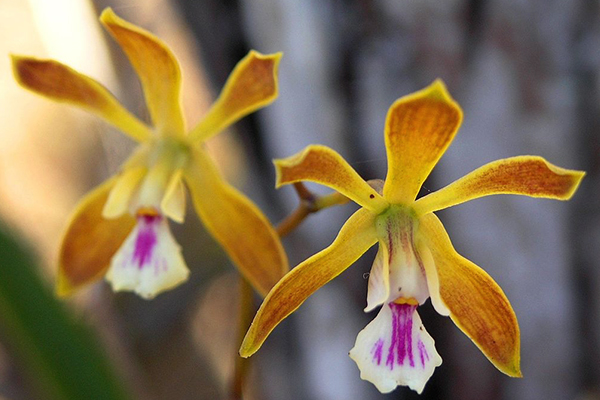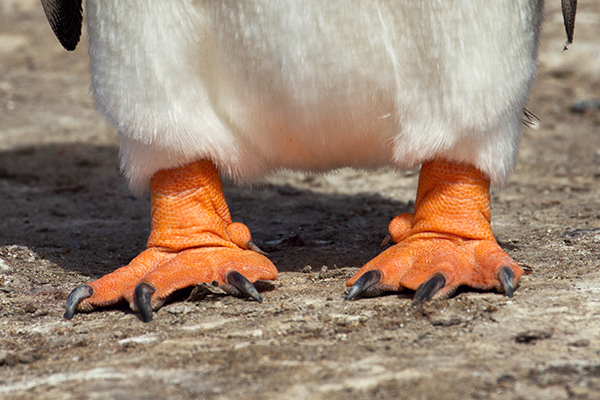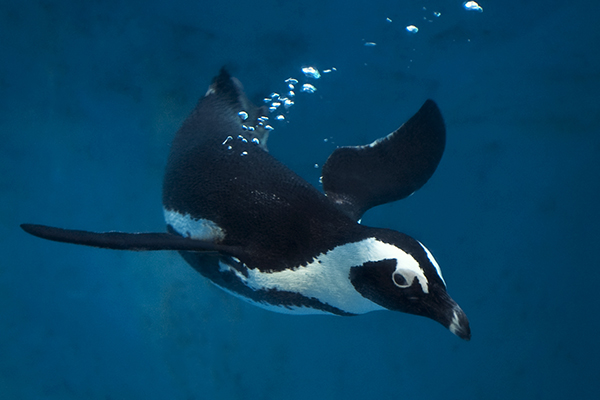Adaptation: The case of penguins
Did you know that there is a species of moth with a 12-inch long nectar-gathering tongue? Not by coincidence, this moth feeds on and pollinates a kind of orchid that has an 11-inch long nectar-producing tube. Nature abounds with examples of plants and animals that have adapted to their environment over time to ensure the survival of the species.
For centuries, human beings have looked at the complexity of the natural world in wonder. From the delicate design of the more than 18,000 species of orchids that exist (Figure 1), to the breathtaking flight of birds, humans have struggled to understand what the driving force behind the diversity of life is and why so many remarkably different shapes and features exist in the natural world.
In 1802, the English priest William Paley wrote that the complexity of animals and plants is of "a degree which exceeds all computation," and he argued that only a divine being could have created these organisms.
Having been educated in England in the early 19th century, Charles Darwin was not only familiar with Paley's writings, but impressed by them. However, Darwin disagreed with Paley's reasoning. Why would a deity create parasites that would eat away at the insides of an organism, and what would the purpose be of crafting a bird that could not fly?
The structure of organisms and the environment
Darwin knew that other natural historians had begun to ask similar questions during the 18th and early 19th centuries. They had begun the gradual process of figuring out that there was a special connection between organisms and the environment, a kind of fit that explained why particular structural details or patterns exist in nature. For example, why are flowers of a certain shape visited most often by certain moths while others are pollinated by bees, or why do large animals that swim well, whether they are dolphins or alligators or eels or sharks, all have long streamlined bodies?
The answer is adaptation, an idea that Darwin absorbed from his predecessors. Two Frenchmen contributed important ideas on adaptation that Darwin worked into his theory of natural selection (see our Charles Darwin II module for more information). Georges Leclerc, who became famous during the middle and late 1800s for compiling information on the habits and geographical distribution of animals and plants, recognized that the differences between related species of animals living in different parts of the world reflected the different environments that they occupied. He thought that animals would somehow change after migrating from one place to another. Jean Baptiste Lamarck looked at things from a different perspective. He popularized the idea that the world's environment changed and with it the needs of animals living off of the environment, thus animal's characteristics changed to suit their environment.
We refer to the adjustments in the fit between organisms and the environment as evolutionary adaptation, or simply adaptation. Adaptation is the root concept that grew into Darwin's theory of natural selection. Natural selection is the mechanism that explains how things change; adaptation explains why they do.
Adaptation as a result of natural selection
Adaptation is based on the concept that populations of organisms change over time as a result of natural selection. Adaptive evolution is driven by increased survivorship and/or increased reproductive success. This happens when a collection of individuals in a population gain an advantage because of special traits that they share in common. These traits may be either inconspicuous or quite elaborate. They may, for example, start out as a 2 mm lengthening in the nectar-gathering tongue of a few moths that feed on orchids. If beneficial, over time the tongue may become much longer in that species as those individuals and their offspring out-reproduce others. Eventually the long shape becomes the norm, because the long-tongued adaptation, which allows more efficient feeding, contributes to an increase in reproductive success.
Darwin himself discovered an orchid with a huge, 11 inch long nectar-producing tube in Madagascar. He predicted that there would be a moth that feeds from the tube with an 11 inch proboscis. Almost 50 years later Darwin's prediction proved true when scientists discovered the moth Xanthopan morganii praedicta with a 12 inch proboscis which fed from, and pollinated, Darwin's orchid (Angraecum sesquipedale). Of course, the ultimate source of an adaptation like this, and all others, is genetic, because only traits that can be passed on from one generation to the next are influenced by natural selection.
Darwin's orchid-and-moth example is one of the more visible cases of adaptation. One feature of a plant is associated with a corresponding feature of an animal so that both benefit from their interconnected lives in nature. But more generally, organisms are a mass of adaptations that come together to make a particular lifestyle work. Why? Because there are many factors in the environment that are "problems" that require "solutions." The availability of food, predator-prey relationships, and climate all play an important role in selecting "through natural selection" beneficial characteristics.
Comprehension Checkpoint
The example of penguins
Let's take penguins (Figure 2) as an example. Although the majority of penguin species live in temperate climates, some of the penguins we are most familiar with live in the extreme conditions of Antarctica. These flippered, flightless birds provide a wonderful example of multiple evolutionary adaptations.
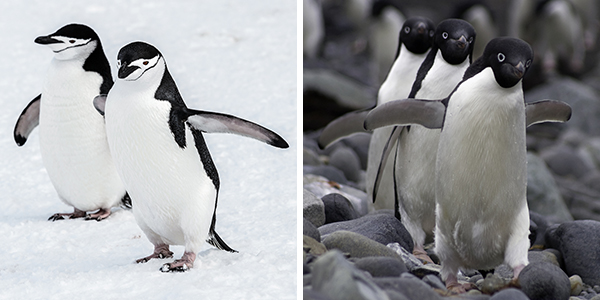
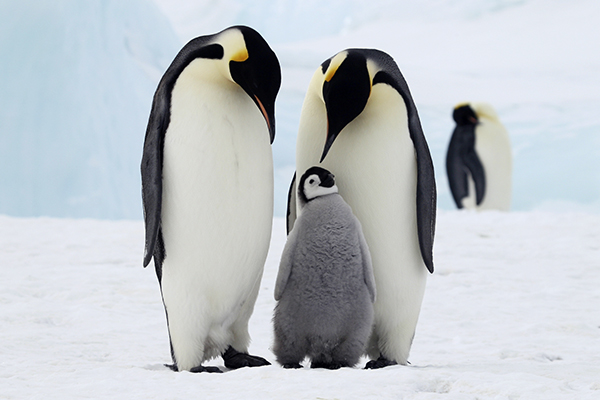
Heat-conserving adaptations
One of the most difficult challenges for Antarctic-dwelling penguins is maintaining their body temperature under the vastly different conditions on land, where they live and breed, and in the icy water, where they feed. Like other birds, penguins are homeothermic, maintaining a relatively stable body temperature between 35º and 41º C. However, unlike most other birds, penguins do this in a climate where sea temperatures approach -2°C and air temperatures can range from 0°C to a bone chilling -60°C.
While metabolism and muscle activity generate body heat internally, penguins have unique external adaptations to help them conserve this heat. To avoid heat loss, they are insulated by a thick layer of fat, or blubber, under the skin. This helps retain heat, just as in whales, seals and other large cold water animals. In addition, penguin bodies are covered by a layer of feathers that are more densely packed than in any other birds. The base of their feathers are also downy, to trap air for better insulation. In addition, penguins have evolved behaviors to keep their feathers in good condition and insulate them from the cold wind and water. They waterproof themselves by preening, which involves spreading special oily secretions from the uropygial gland at the base of their tail to other areas of their body.
Penguins have other adaptations that help them control temperature. An elaborate circulatory system allows them to retain and dissipate heat easily. The arteries and veins in their extremities are situated very close together so that they can exchange heat. This is called a "countercurrent" heat exchange system to reflect the to-and-from flow of blood relative to the heart. The layout raises the temperature of blood flowing from the flippers and legs to the body core by drawing it past veins carrying already-warm blood to the extremities. Penguins can also increase blood flow to their flippers in order to cool down when necessary. This is important because not all penguins live in cold climates year round. The Galapagos penguin (Spheniscus mendiculus), for example, lives near the equator where it can get quite hot.
Behavioral adaptations
There are several behavioral adaptations used by penguins in their constant struggle to maintain a stable body temperature. They shiver to increase metabolic heat production, and they pant and expose their feet to get rid of excess heat (their feet are the only part of their body not covered with insulating feathers). Some species also seek shelter under rocks to avoid temperature extremes, a logical and simple maneuver when possible. Penguins are territorial by nature; however, the Emperor penguin (Aptenodytes forsteri) has evolved the social behavior of huddling together to share body heat in the harsher conditions of mainland Antarctica, where temperatures below -60°C have been recorded and gale force winds can approach 200 to 300 km/hr.
Penguins are amphibious birds, feeding only at sea and breeding on land. All three pygoscelid penguins prey primarily on small shrimp-like invertebrates, called krill, and to a lesser degree on a variety of fish. While they forage at sea, they are under constant threat from their predators, including leopard seals, orcas (killer whales), and occasionally fur seals. Consequently, not only are penguins much more adept at swimming than walking, they even consume one-third less energy at sea than on land. On land, penguins tend to inelegantly walk, jump, or toboggan on their bellies, sometimes over long distances, to get to their rookeries, where they breed, or to enter the seas. But in the water they are a marvel of naval engineering. Buoyant, torpedo-shaped bodies and an efficient flipper design allow penguins to "fly" underwater, using their bill, tail, and feet to rapidly change direction pursuing fish or avoiding predators. When traveling long distances, penguins will porpoise, leaping out of the water, to reduce drag and conserve energy.
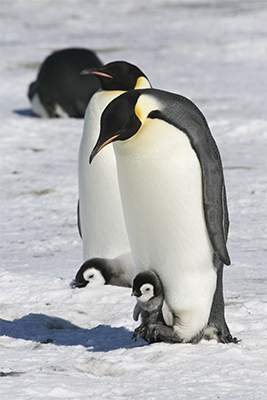
Comprehension Checkpoint
Breeding adaptations
The breeding adaptations of penguins also reflect their environment. Most pygoscelid penguins are faithful to both their mate and their nest site, returning to breed in the same spot year after year. They assemble into colonies that can be small, consisting of a few breeding pairs, or quite large, with millions of pairs. The males arrive first and prefer to build the nests, which are made of small rocks piled up in snow-free areas. Females arrive shortly after the males and locate their mate (which may be no easy task among millions of - to us - look-alikes decked out in the same tuxedo).
Emperor and King (Aptenodytes patagonica) penguins carry their eggs, and very young chicks, on their feet. An odd behavior that certainly makes it more difficult for them to walk, however, a necessary practice to keep their eggs and young warm and prevent them from freezing on cold Antarctic rocks. Emperor penguins breed in the harshest conditions on earth, the Antarctic winter. While the exact reasons for this are not completely understood, many scientists believe that the timing allows the new chicks, who become independent from their parents five months later, to set out on their own during the milder Antarctic summer. It's easy to see how natural selection would maximize the breeding success of parent penguins who weaned their chicks just when the climate favored their survival.
Adaptations in other species
Penguins are not unique in their adaptations to the environment. Polar bears evolved white fur because it better conceals them in the arctic. All other bear species are brown or black, so we might presume that, among the remote ancestors of today's polar bears, the whiter individuals probably had more hunting success because their prey found it harder to spot them against the snow and ice. Squirrels evolved the behavior of burying nuts during summer and fall seasons to provide them food through the winter. Even the common dandelion has adapted to its environment by producing a characteristic, white fluff (called a pappus) on its seeds to increase their spread, and thus their chances of survival, in the environment.
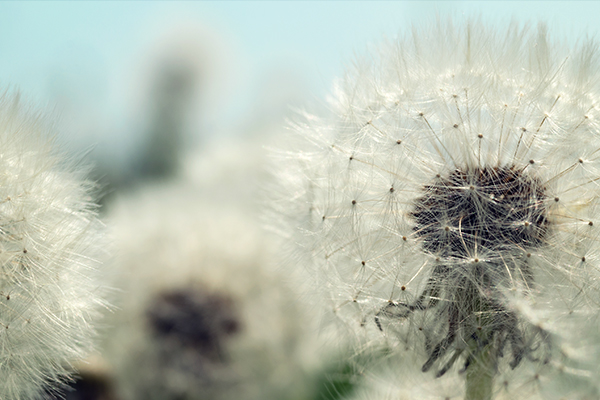
So, William Paley was not quite right when he suggested that the complexity of the natural world exceeds the capabilities of human calculation. The clue that was missing to him was the concept of adaptation. Darwin put it all together: The features and characteristics that could only be an imponderable source of wonder to Paley actually turned out to be a key to understanding the diversity and complexity of life. That key is adaptation; and all organisms, even human beings, have evolved complex features in response to pressures from their environment.
